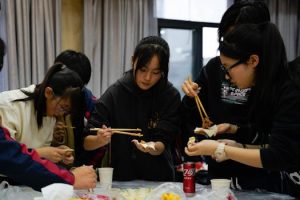How Couture Houses Preserve Traditional Techniques
In the world of fashion, haute couture is the epitome of luxury and craftsmanship. It represents the highest form of creativity and style, characterized by meticulously handcrafted garments that blend traditional techniques with modern design. Despite the fast-paced nature of the industry, couture houses have managed to preserve these centuries-old techniques, ensuring that they continue to thrive and evolve. So how exactly do couture houses keep these traditional techniques alive? Let’s take a closer look.
The Importance of Preservation
Couture houses understand the value of preservation, not only in terms of cultural heritage but also in ensuring the continuity of the craft. These techniques have been passed down from generation to generation, with each house adding their own unique touch. By preserving these techniques, couture houses are also preserving their own brand identity and aesthetic.
Apprenticeships and Ateliers
One of the key ways that couture houses preserve traditional techniques is through apprenticeships and ateliers. Young designers are given the opportunity to learn from experienced craftsmen and women, honing their skills through hands-on experience. Ateliers, which are the workshops where garments are made, are often an integral part of a couture house, and this is where the magic happens. From pattern-making to embroidery, apprentices are taught various techniques and are given the chance to perfect them under the guidance of experts.
Embracing Technology
While couture is all about traditional techniques, that doesn’t mean that technology is completely shunned. In fact, many couture houses have embraced technology in order to preserve and enhance these techniques. For example, 3D printing has revolutionized the process of creating intricate accessories, giving designers more creative freedom and reducing production time. Digital embroidery machines have also made it easier and faster to create intricate details on garments.
Collaboration with Artisans
Couture houses often collaborate with skilled artisans, who have mastered traditional techniques in different parts of the world. This provides a platform for these artisans to showcase their skills and also introduces new techniques to the couture world. These collaborations not only help to preserve traditional techniques but also promote cultural exchange and diversity within the industry.
Passing Down Knowledge
Aside from apprenticeships and ateliers, couture houses also pass down knowledge through formal training programs and workshops. These programs are often open to the public and provide an opportunity for those interested in learning about traditional techniques to do so. This not only allows the craft to be shared with a wider audience but also ensures that the knowledge is not lost.
Investing in the Future
Couture houses understand that in order for traditional techniques to continue, they must be invested in and nurtured. This includes investing in research and development, as well as reaching out to younger generations to garner interest in the craft. By investing in the future, couture houses are securing the longevity of traditional techniques.
In Conclusion
The preservation of traditional techniques is crucial in keeping the art of couture alive. Couture houses play a pivotal role in ensuring that these techniques continue to evolve and thrive through apprenticeships, collaborations, embracing technology, and passing down knowledge. By investing in the future, they are not only preserving their own legacy but also that of these centuries-old techniques. With their dedication to craftsmanship and heritage, couture houses are keeping traditional techniques alive and relevant in the ever-changing world of fashion.







